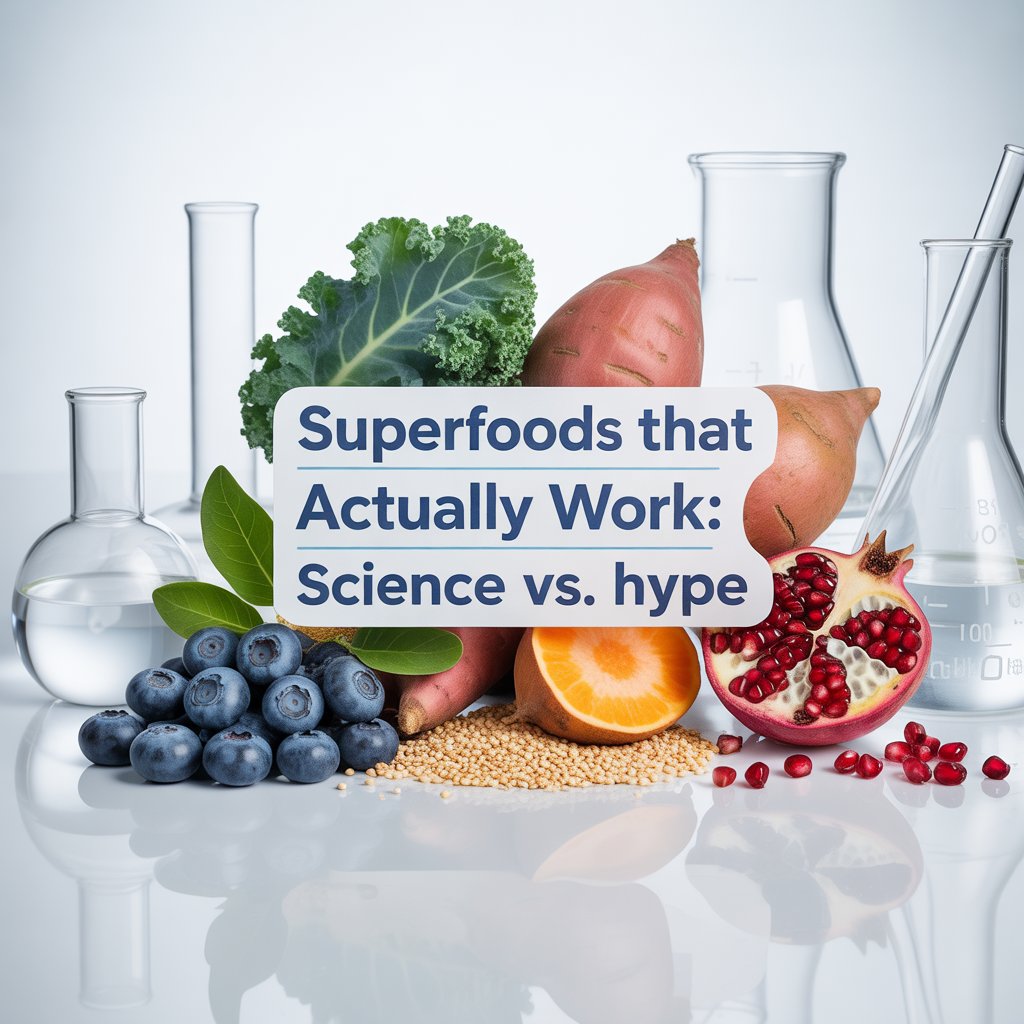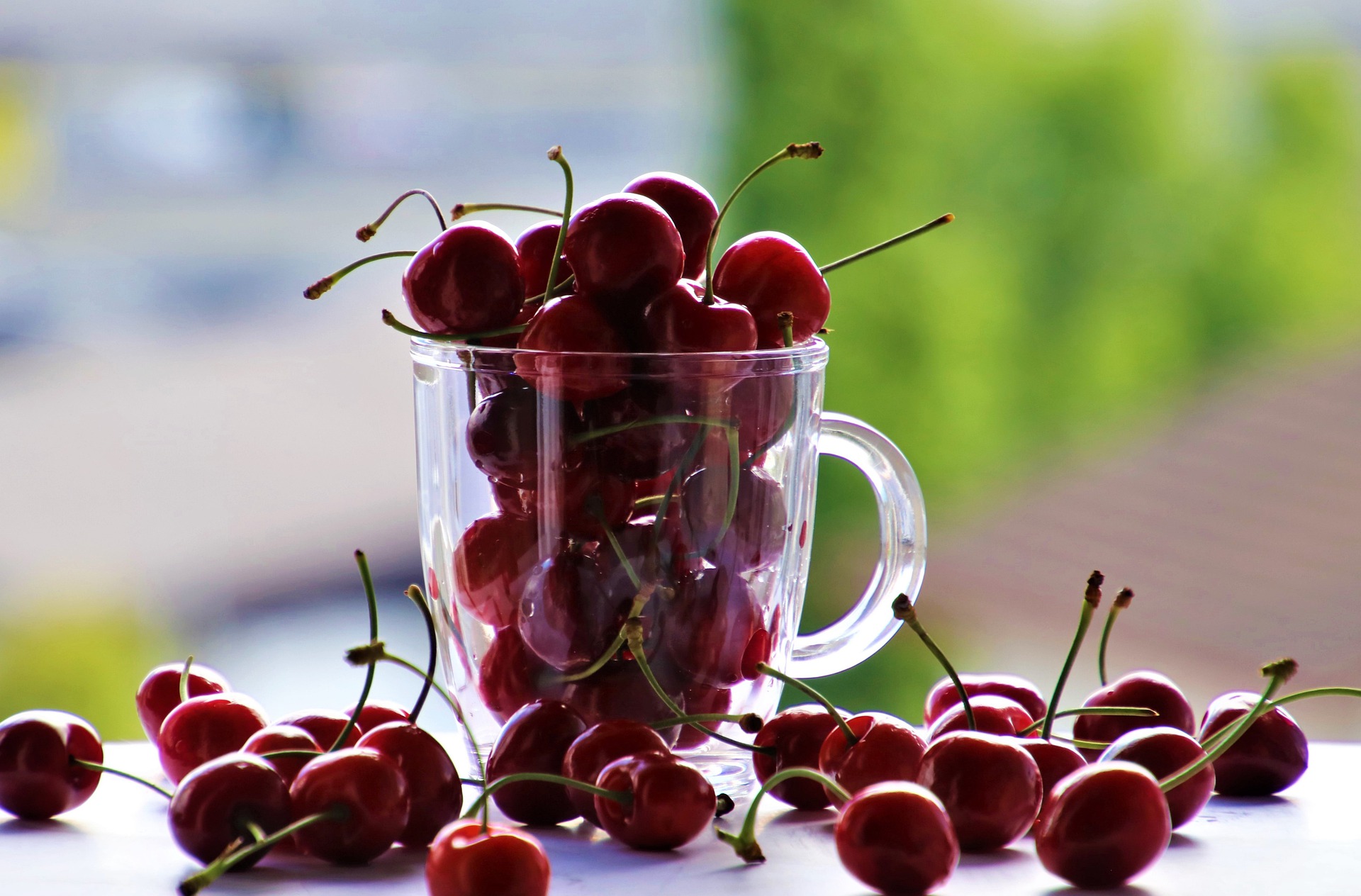Introduction: The Superfood Obsession
From chia seeds to acai bowls, “superfoods” have become the holy grail of modern wellness. Scroll through social media or stroll down a grocery aisle and you’ll find endless promises: more energy, glowing skin, better immunity, longer life. But how many of these claims are truly backed by science and how many are just smart marketing?
In this article, we’ll explore the science behind the most talked-about superfoods, identify which ones live up to the hype, and share how to make smarter nutrition choices without breaking the bank.
What Exactly Are Superfoods?
“Superfood” isn’t a scientific term, it’s a marketing label. Nutrition experts use it loosely to describe foods that are rich in nutrients and antioxidants, like vitamins, minerals, and phytonutrients. But here’s the catch: no single food can meet all your nutritional needs or magically prevent disease.
What matters most is dietary balance, a variety of nutrient-dense foods eaten consistently over time.
The Science-Backed Superfoods That Deserve the Title
1. Blueberries – The Antioxidant Powerhouse
Blueberries are loaded with anthocyanins, compounds known for their anti-inflammatory and brain-protective effects.
Research says: Studies from the Journal of Agricultural and Food Chemistry show that regular blueberry intake may improve memory and slow cognitive decline.
Pro tip: Add a handful to your morning oatmeal or smoothie for a daily antioxidant boost.
2. Fatty Fish – The Heart’s Best Friend
Salmon, mackerel, sardines, and tuna are packed with omega-3 fatty acids, which play a crucial role in brain health and cardiovascular function.
Research says: The American Heart Association links two servings of fatty fish per week with a lower risk of heart disease.
Alternative: For plant-based eaters, flaxseeds and walnuts are great omega-3 sources, though they provide ALA (a less potent form).
3. Leafy Greens – The True Superfood MVP
Spinach, kale, collard greens, and Swiss chard might not be Instagram stars, but they’re among the most nutrient-dense foods available.
Research says: Rich in folate, vitamin K, calcium, and fiber, these greens are associated with a lower risk of diabetes, heart disease, and even certain cancers.
Pro tip: Lightly steam or sauté to preserve nutrients and improve absorption.
4. Greek Yogurt – The Gut-Loving Protein Hero
Greek yogurt is high in protein and packed with probiotics that support gut health.
Research says: Studies in Frontiers in Microbiology highlight how probiotics enhance digestion, immunity, and even mental well-being through the gut-brain axis.
Watch out: Avoid flavored yogurts with added sugars; opt for plain versions and sweeten naturally with fruit or honey.
5. Green Tea – Nature’s Gentle Energy Boost
Green tea is rich in catechins, a group of antioxidants linked to fat oxidation, heart health, and longevity.
Research says: According to The American Journal of Clinical Nutrition, regular green tea consumption may reduce LDL cholesterol and improve metabolism.
Pro tip: Replace your afternoon coffee with matcha or green tea for sustained focus without the jitters.
6. Turmeric – The Golden Healer
Curcumin, the active compound in turmeric, is a potent anti-inflammatory and antioxidant.
Research says: Clinical trials suggest curcumin may reduce arthritis pain and support metabolic and cognitive health.
Important: Curcumin is poorly absorbed alone, so pair it with black pepper or healthy fats for better bioavailability.
Superfoods That Are More Hype Than Help
Not all that glitters in the wellness aisle is gold. Some “superfoods” gain popularity more from marketing than proven benefits.
1. Acai Berries
Once touted as a miracle weight-loss fruit, acai’s benefits are mostly anecdotal. While rich in antioxidants, it’s not superior to blueberries or blackberries and often comes with a high price tag.
2. Coconut Oil
Despite claims of being a “healthy fat,” coconut oil is over 80% saturated fat.
Research says: Excess consumption may raise LDL (“bad”) cholesterol, outweighing potential benefits. Use sparingly.
3. Detox Teas and Juices
The idea that these products “flush toxins” from your body is misleading. Your liver and kidneys already handle detoxification naturally. Instead, focus on hydration, balanced meals, and fiber-rich foods.
The Real Secret: Food Synergy, Not Food Fads
Nutrition doesn’t work in isolation. The benefits of superfoods are amplified when combined with other healthy habits, a concept known as food synergy.
For example:
-
Pair spinach (iron) with citrus (vitamin C) to boost absorption.
-
Combine turmeric and black pepper to enhance curcumin uptake.
-
Mix berries with whole grains for a balanced fiber-antioxidant combo.
This balanced approach outperforms any single “miracle food.”
How to Choose Superfoods That Work for You
-
Read Beyond the Label: Check nutrition facts and ingredient lists.
-
Go Local: Seasonal, locally grown produce is often fresher and more nutrient-rich.
-
Balance Cost and Benefit: A bag of lentils or a bunch of kale can deliver more nutrients than imported powders.
-
Listen to Your Body: Not every superfood suits everyone — for instance, some people experience bloating from excessive chia or flax.
The Bottom Line: Science Over Hype
Superfoods aren’t magic bullets. They’re part of a much bigger picture, a healthy lifestyle, consistent diet, and smart choices.
The true “superpower” lies not in rare berries or exotic seeds, but in habitual nourishment: eating colorful, whole, minimally processed foods daily.
So next time you’re tempted by a pricey new powder or blend, ask:
Does science back it up or is it just clever branding?
If you want to create a realistic superfood plan tailored to your lifestyle, start small: pick one evidence-based food from this list and incorporate it daily for two weeks.
Then observe the results, more energy, improved digestion, better mood and build from there.
Because real wellness isn’t found in hype.
It’s built, bite by bite, through consistency and science. Learn more…








